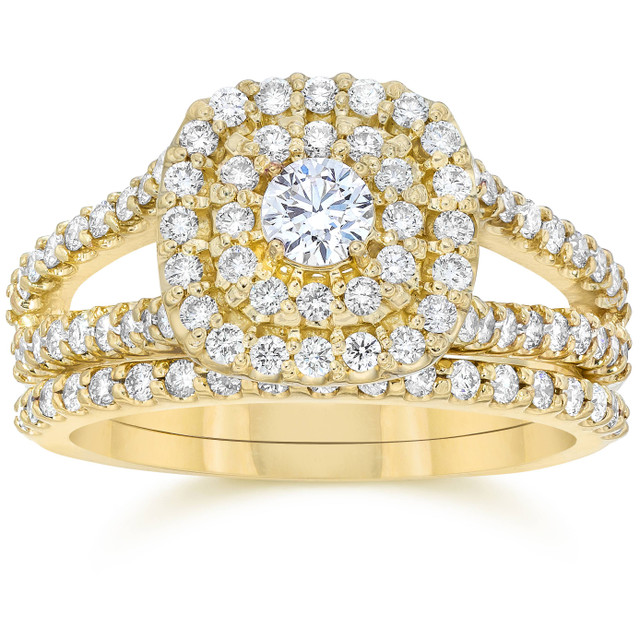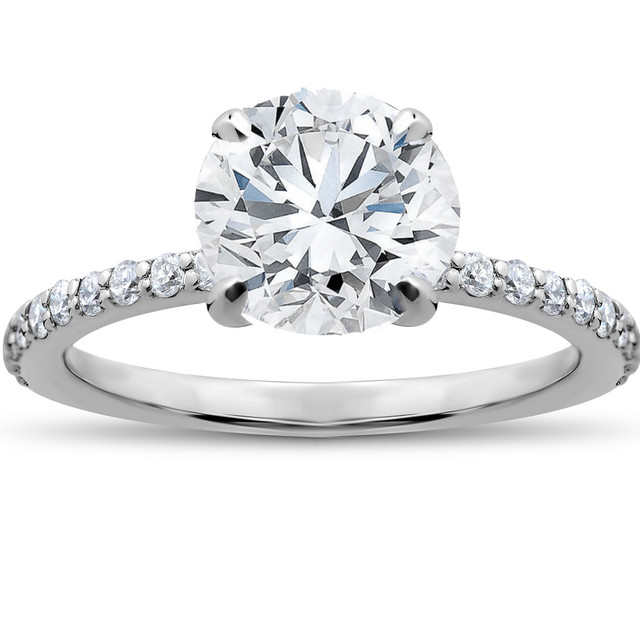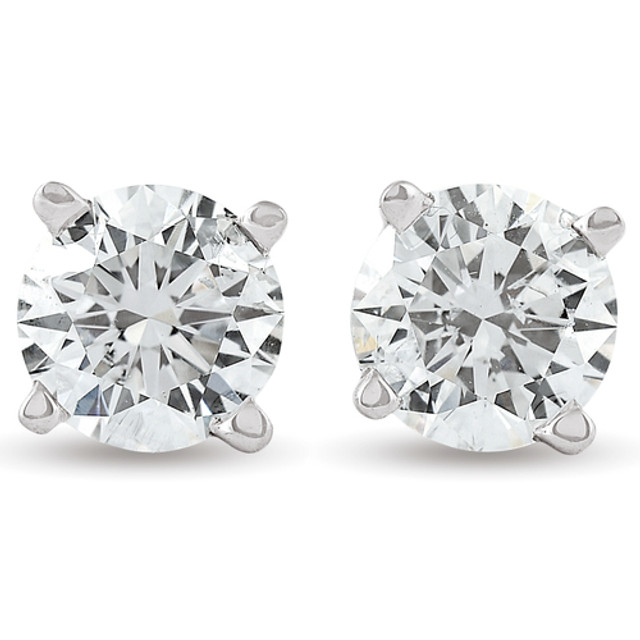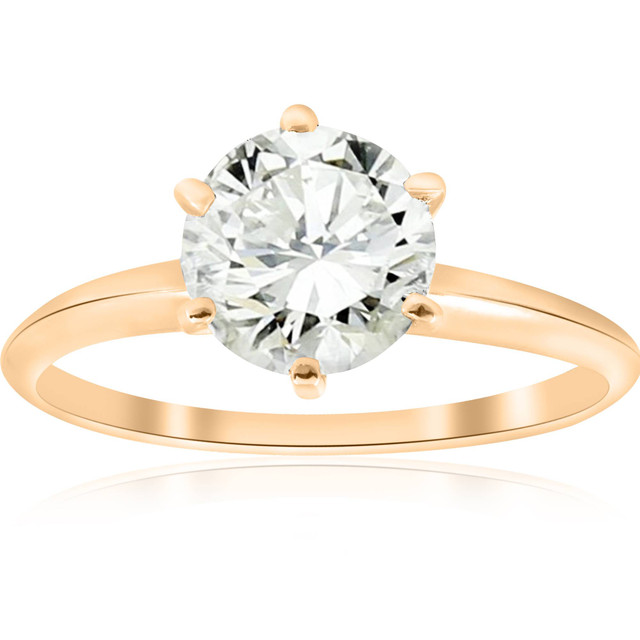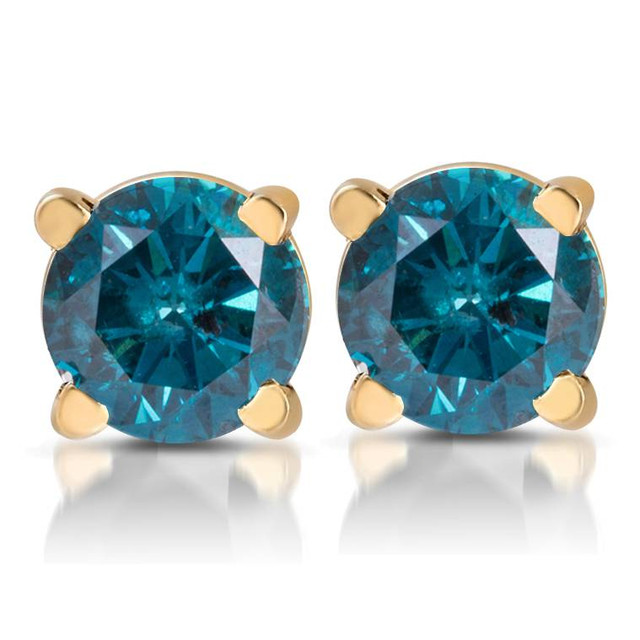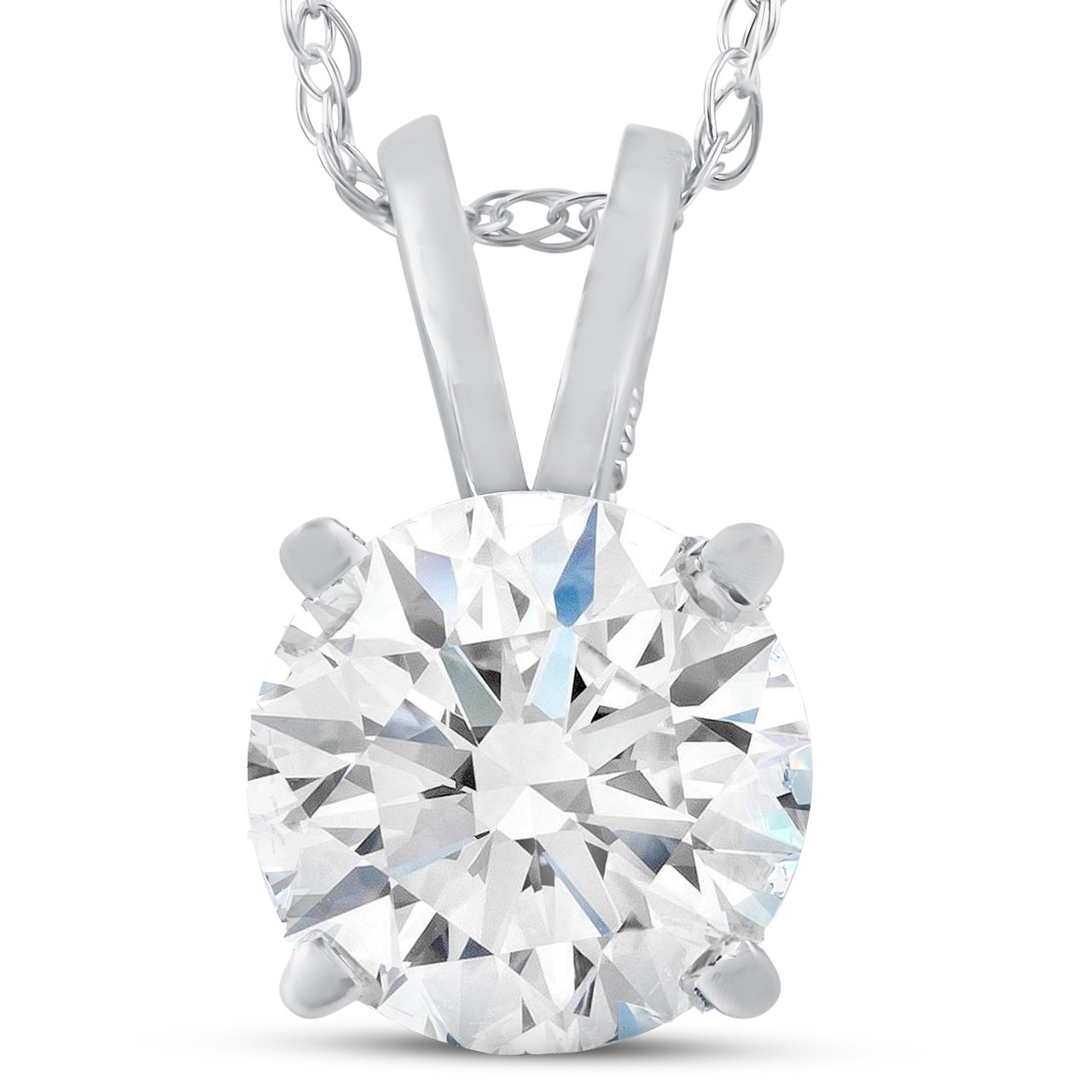What is the Difference Between Moissanite and Diamonds? Your Guide
May 19, 2023

At Pompeii3, we believe knowledge is power, especially when it comes to jewelry shopping. Today, we’re exploring the dazzling world of two sought-after gemstones that often get mistaken for each other – moissanite and diamonds. By the end of this blog, you'll be able to understand the differences between moissanite and diamonds and decide which gem truly resonates with your style. So, let's dive in!
What are Diamonds?
1 1/10CT Cushion Halo Diamond Engagement Wedding Ring Set 10K Yellow Gold (H-I, I1)
($1,972.81)
In our comparison of Moissanite vs diamonds, we will start out with natural diamonds. These are the classic and traditional choice. Diamonds are renowned for their brilliance, hardness, and enduring symbol of love. They are formed deep within the Earth's mantle under conditions of intense heat and pressure, taking billions of years to form. This complex creation process creates key differences between Moissanite and diamonds, giving the latter their unique value.
The quality of a diamond is evaluated based on the "Four Cs" - Cut, Clarity, Color, and Carat weight. Cut influences the diamond's brilliance, while clarity refers to the presence of inclusions or flaws. The color scale for diamonds ranges from D (colorless) to Z (yellow or brownish), and carat weight determines its size.
Lab-Grown Diamonds
1 3/4 ct Lab-Grown Diamond Sophia Engagement Ring 14k White Gold (F-G, VS)
($6,664)
Lab-grown diamonds are a fantastic alternative to natural diamonds. They are real diamonds in every sense, sharing the same physical, chemical, and optical properties as their natural counterparts. The only difference? Their origin.
Created in highly controlled laboratory environments, these diamonds are formed by replicating the natural diamond-growing process. The result is a diamond that is visually, chemically, and physically identical to those grown beneath the Earth's surface.
What is Moissanite?
2 Ct 14k White Gold Moissanite Screw Back Studs 6mm
($533.17)
Moissanite, on the other hand, is a gemstone born from the stars. Quite literally! It was first discovered by French scientist Henri Moissan in 1893 in a crater created by a meteorite that fell to Earth. He initially mistook them for diamonds due to their exceptional sparkle and hardness. However, Moissanite is a naturally occurring silicon carbide, quite rare in nature, so most Moissanite gems you see today are lab-created, offering superior control over their quality.
When comparing Moissanite vs diamonds, Moissanite scores a 9.25 on the Mohs hardness scale, making it one of the hardest substances on Earth, just below diamonds. This gemstone is known for its high refractive index, which gives it more fire (rainbow-colored flashes of light) than diamonds. So, if you're all about that sparkle, this might be an appealing difference between Moissanite and diamonds!
Comparing Diamonds & Moissanite
Brilliance
Gold 1 1/2ct Round Solitaire Diamond Engagement Ring (F-G, I1)
($6,071.97)
Both diamonds and Moissanite are loved for their dazzling brilliance, but one difference between them lies in how they refract light. Diamonds exhibit a balanced combination of white and colored light, known as brilliance and fire, respectively. Moissanite displays more fire (rainbow flashes), which makes them even more brilliant than diamonds. Some find this appealing, while others prefer the more subdued fire of a diamond.
Hardness
Diamonds are the hardest known mineral and rate a perfect 10 on the Mohs hardness scale. When comparing Moissanite vs diamonds, Moissanite isn't far behind with a rating of 9.25, making it one of the hardest substances on Earth and excellent for everyday wear.
Color
1/3ct Blue Diamond Studs 14 Karat Yellow Gold (Blue, I1)
($346.55)
Diamonds range from colorless to shades of yellow or brown and even come in fancy colors like blue and green. Moissanite, however, is not entirely colorless and can project a yellow or grayish hue under certain lights. Today, colorless options are available but might carry a slightly higher price tag.
Price
Perhaps the most significant difference between diamond and Moissanite is the price. Moissanite is significantly less expensive than diamonds, but lab-grown diamonds can be a great middle-ground option. This price difference doesn't reflect quality but rather the rarity and market demand for natural diamonds.
Sustainability
2 Ct Moissanite Solitaire Pendant 14k White Gold Women’s Necklace
($799.77)
Given that most Moissanite is lab-created, it has minimal environmental impact compared to natural diamond mining. For those looking for a more eco-friendly choice, this difference between Moissanite and diamonds makes it an excellent option.
Choosing Between Diamond & Moissanite
The choice between diamond and Moissanite jewelry ultimately comes down to personal preference. If you are after a classic, timeless gem with unmatched hardness, a diamond is for you. If you prefer a highly brilliant yet budget-friendly and ethical gem, then consider Moissanite.
Remember, whether you opt for a fiery Moissanite or a classic diamond, the most important factor is that your chosen gem reflects your personal style and values. After all, the differences between these gemstones give each a unique charm, and beauty, as they say, is in the eye of the beholder!
Shop Handcrafted Pieces at Pompeii3
At Pompeii3, we celebrate the beauty of both diamonds and moissanite and the unique differences between them. Each has its own charm and allure, and both make stunning pieces of jewelry. Which gemstone twinkles brightest for you?
With more than 100 years of experience in the industry, Pompeii3 brings you a unique collection of handcrafted, heirloom-quality jewelry to suit your needs. Whether you're looking for the perfect engagement ring or a special gift for a loved one, you’ll find the perfect, sparkling piece of jewelry right here.


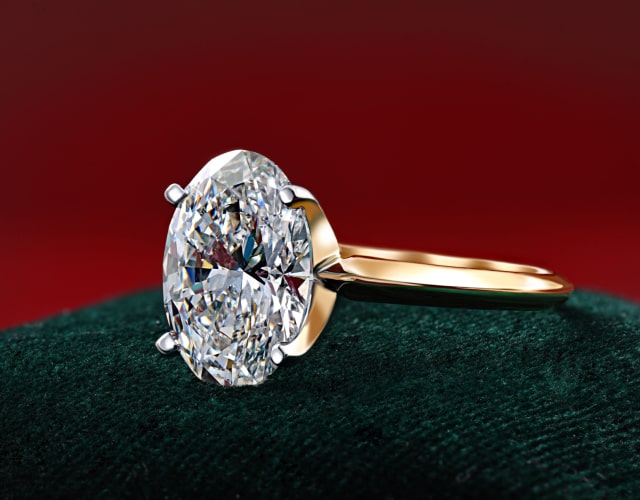 Engagement Rings
Engagement Rings
 Tungsten
Tungsten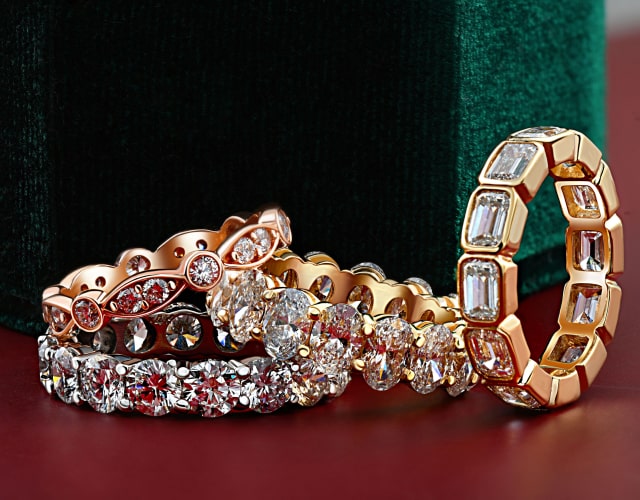 Wedding Rings
Wedding Rings
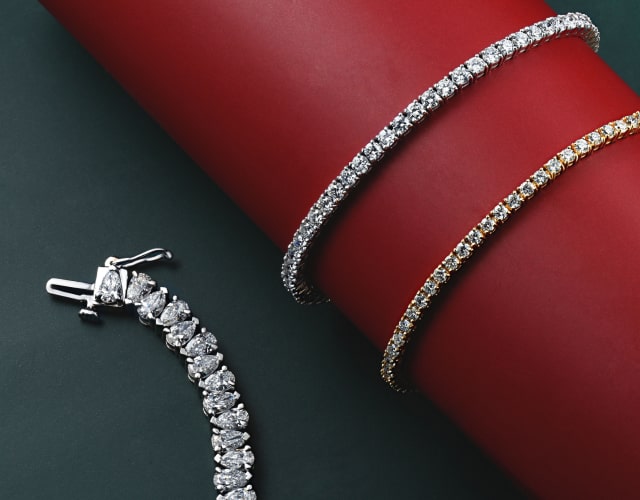 Fine Jewelry
Fine Jewelry
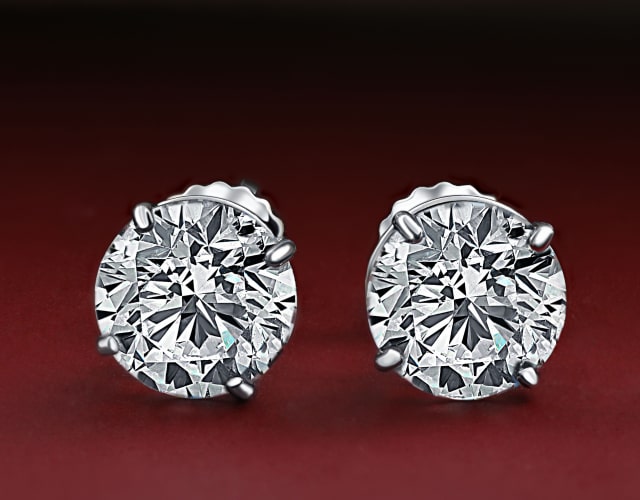 Diamond Studs
Diamond Studs
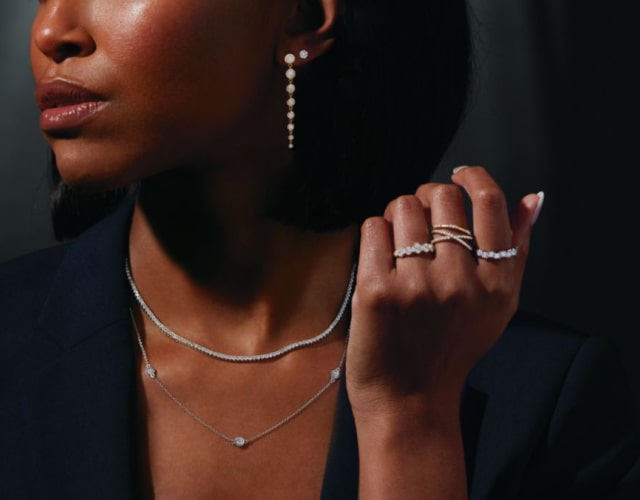 Up To 80% Off
Up To 80% Off
 Find The Perfect Gift
Find The Perfect Gift
 White Gold
White Gold
